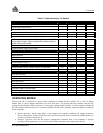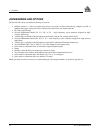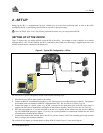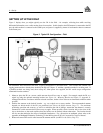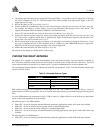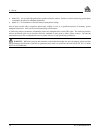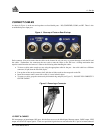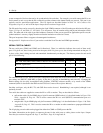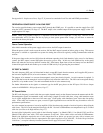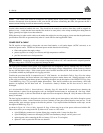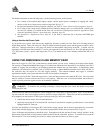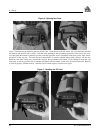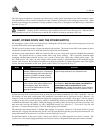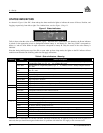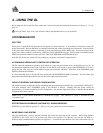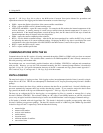
2 – Set Up
DL™ User Manual Rev 3 21
See Appendix H - Replacement Parts, Page 87, if you need to consult the list of NovAtel and LEMO part numbers.
PERIPHERAL POWER SUPPLY VIA COM2 PORT
The receiver provides battery power output (BAT) through the COM2 port. It is possible to turn the supply On or Off
using the VOUT command, see Page 63. The BAT output is the switched output of the input power supply so that 12V
output requires 12V input.
NOTE: When using peripheral output, it is important to note that the BAT output has a 2-amp fuse. This fuse is non-
user replaceable, and if you blow the fuse by trying to draw power greater than 2-amps, you will have to return the
receiver to the factory for repair.
Power Control Operation
After initial connection of the power supply to the receiver, the BAT output is turned on.
When the power switch is used to turn the receiver Off, the BAT output is turned on before going to sleep. This ensures
that power is available to a potential host system for turning the receiver On again by starting communication with the
receiver.
If the power input to the receiver falls below the minimum operating level (both batteries, in the case of a dual battery
system), the BAT output is turned Off before the receiver goes to sleep. In this case, both COM activity or the power
button will wake the receiver up and BAT remains Off. If the battery input from at least one battery recovers then BAT
is turned On again and the unit wakes up as a result of COM activity or by pressing the power button.
RF PORT & CABLES
The radio frequency (RF) port is bi-directional in that it accepts RF signals from the antenna, and it supplies DC power to
the low-noise amplifier (LNA) of an active antenna. It has a TNC female connector.
The purpose of an antenna is to convert electromagnetic waves into electrical signals. An active antenna is required. It
has a LNA that boosts the strength of received signals to help offset the cable losses. The LNA can be energized directly
by the DL, or by another source. NovAtel recommends the use of active antennas only.
For further information on the signals or connector type for the RF port, please see the RF Input / LNA Power Output
section in APPENDIX B - DL Specifications, Page 37.
RF Coaxial Cable
The RF (radio frequency) coaxial cable that you require depends mostly on the distance between the antenna and the DL.
Electromagnetic signals are attenuated as they travel along a length of coaxial cable; thus, a long cable introduces more
loss in signal strength than a short one of the same type. Good-quality cable introduces lower losses than low-quality
cable. If the cable loss becomes too great, excessive signal degradation occurs and the DL may be unable to meet its
performance specifications.
An active antenna incorporates a low-noise amplifier (LNA) that boosts the strength of received signals to help offset the
cable losses. The LNA can be energized directly by the DL. NovAtel’s GPSAntennas can compensate for up to 13 dB of
cable loss (see Choose the Right Antenna, Page 17).
NovAtel offers high-quality coaxial cable in the following lengths: 5 m (Model C005), 15 m (Model C015) and 30 m
(Model C030); these come with a TNC male connector at each end. These cables can be used with all GPSAntennas.
Should your application require the use of cable longer than 30 m, before you proceed you may wish to contact your
dealer or NovAtel Customer Service representative and request Application Note APN-003, “Extended-Length Antenna
Cable Runs”, or acquire it directly from the Customer Service page of NovAtel’s Web site.



